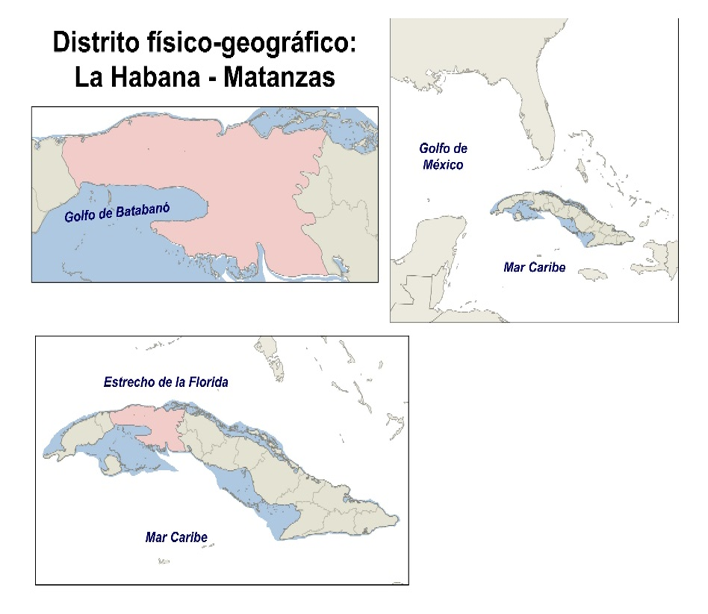Impact of tropical cyclones in the physical-geographic district of Havana-Matanzas. Period 2000-2020
Main Article Content
Abstract
Tropical cyclones are the most impactful meteorological events in the geographic area of the North Atlantic Ocean, the Caribbean Sea, and the Gulf of Mexico. They occur randomly during the hurricane season, which spans from June 1st to November 30th. While there is abundant literature on the mostly negative impacts of tropical cyclones, there is less focus on the benefits they bring and the rainfall contributions of each tropical cyclone in each season. This study aims to describe the impact of tropical cyclones in the physical-geographic district of La Habana-Matanzas during the period 2000-2020. This involved consulting various sources such as newspapers, journals, scientific reports, documents from Civil Defense, and personal interviews. Additionally, the daily rainfall data from selected meteorological stations were collected to quantify the rainfall contributed by tropical cyclones.
Downloads
Article Details

This work is licensed under a Creative Commons Attribution-NonCommercial 4.0 International License.
Those authors who have publications with this journal accept the following terms of the License Attribution-NonCommercial 4.0 International (CC BY-NC 4.0):
You are free to:
- Share — copy and redistribute the material in any medium or format
- Adapt — remix, transform, and build upon the material
The licensor cannot revoke these freedoms as long as you follow the license terms.
Under the following terms:
- Attribution — You must give appropriate credit, provide a link to the license, and indicate if changes were made. You may do so in any reasonable manner, but not in any way that suggests the licensor endorses you or your use.
- NonCommercial — You may not use the material for commercial purposes.
- No additional restrictions — You may not apply legal terms or technological measures that legally restrict others from doing anything the license permits.
The journal is not responsible for the opinions and concepts expressed in the works, they are the sole responsibility of the authors. The Editor, with the assistance of the Editorial Committee, reserves the right to suggest or request advisable or necessary modifications. They are accepted to publish original scientific papers, research results of interest that have not been published or sent to another journal for the same purpose.
The mention of trademarks of equipment, instruments or specific materials is for identification purposes, and there is no promotional commitment in relation to them, neither by the authors nor by the publisher.
References
Alfaro, E., & Quesada, A. (2010), Ocurrencia de ciclones tropicales en el Mar Caribe y sus impactos sobre Centroamérica. Intersedes, XI (No. 22). https://www.kerwa.ucr.ac.cr/handle/10669/76464.
Bello, O., Ortiz, L., & Samaniego, J. (2014), La estimación de los efectos de los desastres en América Latina, 1972–2010. Serie de la CEPAL: Medio Ambiente y Desarrollo. https://www.cepal.org/es/publicaciones/37104-la-estimacion-efectos-desastres-america-latina-1972-2010
CENCLIM, C. N. (2000-2020). Boletines de la Vigilancia del Clima.
Centro Nacional de Huracanes y Centro de Huracanes del Pacífico Central. (s. f.). Introducción a la marejada ciclónica. [Archivo PDF] Obtenido de https://www.nhc.noaa.gov/surge/marejadaciclonica-intr.pdf
Claro, R. (2020). Impacto de los ciclones tropicales en el distrito físico geográfico Centro. Período 2000-2019. Tesis de Diploma. Universidad de La Habana.
Cuba y su historial de huracanes | Spanish.xinhuanet.com. (2017, 8 septiembre). XINHUA. Español. http://spanish.xinhuanet.com/2017-09/08/c_136594252.htm
Estado Mayor Nacional de la Defensa Civil. (2017). Glosario de términos del sistema de la Defensa Civil. La Habana: Verde Olivo.
González-Ramírez, C. M., & Ramos Guadalupe, L. E. (2019, 26 septiembre). Cronología de las tormentas tropicales y huracanes que han afectado a La Habana | González-Ramírez | Revista Cubana de Meteorología. Insmet. http://rcm.insmet.cu/index.php/rcm/article/view/493/768
Gutiérrez, R. &. Rivero, M. (1999), Regiones naturales de la isla de Cuba. Editorial Científico-Técnica. Ciudad de La Habana, Cuba. 145 pp.
Latina, A. P. (2017), Cuba divulga informe preliminar de daños ocasionados por el huracán Irma. Escambray. http://www.escambray.cu/2017/cuba-divulga-informe-preliminar-de-danos-ocasionados-por-el-huracan-irma/
Lecha, L. (2017). Pinceladas meteorológicas. La Habana. Científico-Técnica.
Ley 81 del medio ambiente,CITMA. (2016-2020). Gaceta Oficial. La Habana.
Marcelo-García, G. C., & Roura Pérez, P. (2020). Estudio estadístico climatológico de las tormentas tropicales en las provincias de Artemisa, La Habana y Mayabeque, períodos de retorno de los ciclones tropicales | Marcelo-García | Revista Cubana de Meteorología. INSMET. http://rcm.insmet.cu/index.php/rcm/article/view/538/983.
Organización Mundial de Meteorología OMM. (2020). Lluvia Vikidia. https://es.vikidia.org/wiki/Lluvia#:%7E:text=Seg%C3%BAn%20la%20definici%C3%B3n%20oficial%20de,gotas%20menores%2C%20pero%20muy%20dispersas.
Página web del instituto de Meteorología. (2021). Obtenido de https://www.ismet.cu
Rodríguez, C. M., & Pérez, A. L. (2001). Componentes de la gestión del riesgo en la prevención de desastres naturales. Caso Cuba. Instituto de Planificación Física, Lamparilla, No. 65. http://repositorio.geotech.cu/xmlui/bitstream/handle/1234/2503/Componentes%20de%20la%20gesti%C3%B3n%20del%20riesgo%20en%20la%20prevenci%C3%B3n%20de%20desastres%20naturales.%20Caso%20Cuba..pdf?sequence=1&isAllowed=y
Rubiera, J. (2009). Reunión del comité de huracanes en Bahamas.
Rubiera, J. & Ballester, M. (2001, 2002, 2003,2004, 2005, 2006, 2007, 2008, 2010, 2012,
2015, 2016). Temporadas ciclónicas de 2001, 2002, 2003,2004, 2005, 2006, 2007, 2008, 2010, 2012, 2015, 2016 en el Atlántico Norte. ISNMET
Rubiera, J., Llanes, M. & Bermúdez, Y. (2017). Temporada ciclónica de 2017 en el Atlántico Norte. Insmet. http://www.insmet.cu/asp/genesis.asp?TB0=PLANTILLAS&TB1=TEMPORADA&TB2=/Temporadas/temporada2017.htm
Rubiera, J. (2018). Temporada ciclónica de 2018 en el Atlántico Norte. Insmet. http://www.insmet.cu/asp/genesis.asp?TB0=PLANTILLAS&TB1=TEMPORADA&TB2=/Temporadas/temporada2018.htm
Rubiera, J. & Trujillo, G. (2020). Temporada ciclónica de 2020 en el Atlántico Norte. Insmet. http://www.insmet.cu/asp/genesis.asp?TB0=PLANTILLAS&TB1=TEMPORADA&TB2=/Temporadas/temporada2020.htm

